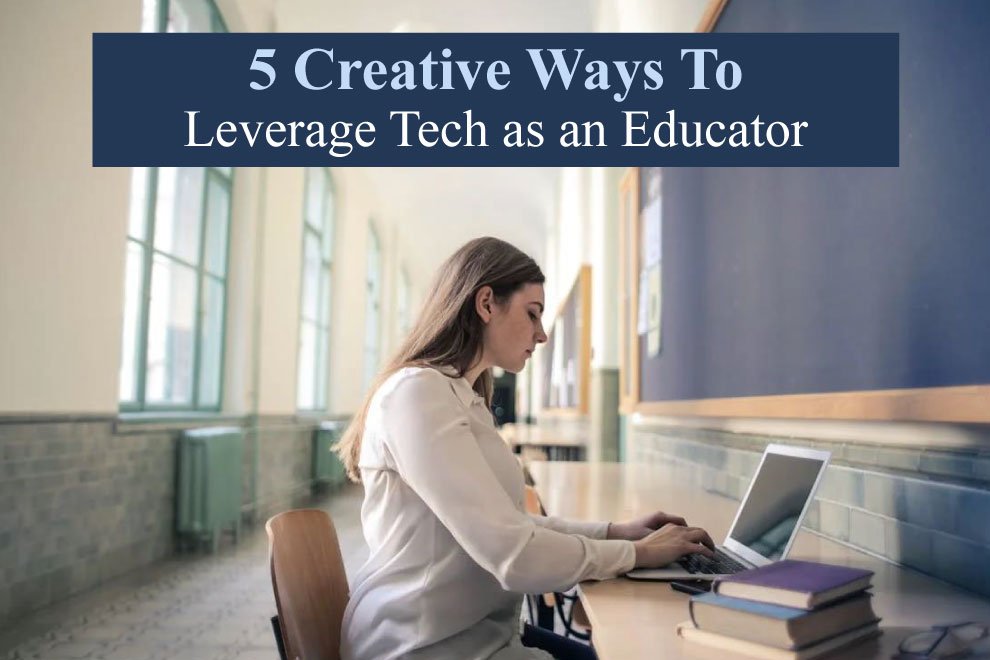As an educator today, using technology is more valuable and important than ever, whether you’re teaching primary students or adolescents prepping for college. If you’re determined to create an exciting, engaging, and helpful learning environment for your students, you should not ignore technology.
From creating engaging visuals to personalizing the learning experience, tech can be a powerful tool for all educators. Here are 5 creative ways you can leverage tech as an educator and help your students thrive and excel.
1. Use Custom Graphics and Digital Content
We live in a visual world. If you want to connect with your students in a relatable manner, use visual graphics, vibrant photography, and high-resolution animations.
Platforms like Canva help you to create engaging presentations without needing extensive design skills. With a few clicks, you can add cool visuals to any lesson and transform boring essays into memorable pictures or even animations.
With such dynamic learning experiences, students find it easy to comprehend the course material and you will notice an improvement in their engagement.
2. Empower Learners with Website Navigation Skills
If you’re an educator who is well-versed in browsing and using the internet, you have the opportunity to teach your students to make the most out of their online resources. This can be either a standalone course or integrated into the existing curriculum.
In today’s digital world, the internet is an essential tool for learning. By integrating lessons on internet navigation, you can equip learners with crucial skills. These lessons can include topics like locating site maps and menus to find information efficiently or how to evaluate online sources to distinguish facts from misinformation.
If students find your lessons helpful, it can significantly boost your reputation as an educator and increase your revenue in the long run.
3. Create AI Courses for the Classroom
With AI rapidly transforming the world around us, it’s no surprise that educators are turning to AI-powered tools to build engaging lessons. Using course creation software streamlines the process of automating courses, lesson plans, and specific learning materials based on the input. These platforms save you time and effort without compromising on quality.
You can easily incorporate multimedia like videos, animations, and even virtual simulations to help students grasp complex concepts. Add quizzes, polls, and live presentations to boost their understanding.
You can also track student performance in real-time with detailed analytics, allowing you to provide target support to each of your learners.
4. Use Video Media to Teach New Skills
By using videos in your lessons, you can help learners develop a deeper connection with the course content.
You can introduce new concepts with the help of captivating videos to spark curiosity in your students and provide them with context. Instructional videos are an excellent way to break down complex skills into small and manageable chunks. This visual approach is found to be particularly helpful for kinesthetic learners.
Remember that videos are not meant to replace traditional teaching methods, but rather to make the lessons more memorable for learners.
5. Incorporate Podcasts Into Your Teaching Routine
Incorporate podcasts into your teaching routine to help students remain focused and calm. You can make them set aside dedicated listening time at least once a week.
Find podcasts that offer different perspectives on a particular subject to ignite creativity in your students. You may also create podcasts that act like a quick revision of the topics covered in the class.
Active listening is an essential part of communication. Through podcasts, students can become better listeners and develop stronger comprehension skills. And it can also be a good break from everyday lessons.
Encourage your students to suggest podcast topics that interest them so that you can cater to diverse interests.
Technology, when used thoughtfully, can transform your classroom into an interactive space where students can explore and connect with the world around them. By embracing it, you can empower students to become lifelong learners.
Also Read: 6 Careers That Combine Art, Science, and Technology










